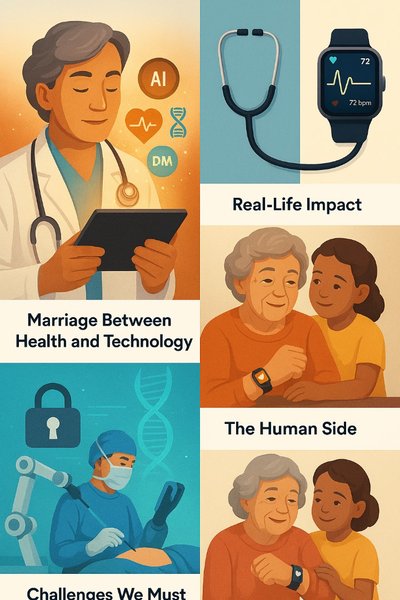Introduction
In 2025, 5G technology is no longer a futuristic concept — it’s the backbone of a new digital era. With lightning-fast speeds, ultra-low latency, and the ability to connect billions of devices simultaneously, 5G is shaping industries, economies, and the way people interact with technology. From immersive entertainment to life-saving healthcare applications, the global rollout of 5G is creating opportunities that were impossible just a few years ago.
This article explores what 5G is, its defining features, the benefits it offers, and its real-world impact in 2025. Whether you are a tech enthusiast, business leader, or everyday consumer, understanding 5G’s role in today’s world will help you make informed decisions about how to adapt and benefit from it.
What is 5G?
5G stands for fifth-generation mobile network technology. It is the successor to 4G LTE and represents a leap in performance and capacity. Unlike earlier generations that focused mainly on faster mobile internet, 5G was designed to support a fully connected digital ecosystem.
Key characteristics of 5G include:
- Faster data speeds — Capable of delivering multi-gigabit download and upload speeds.
- Lower latency — Reducing delays in communication to just milliseconds.
- Massive device connectivity — Supporting up to a million devices per square kilometer.
- Energy efficiency — Optimized for sustainable operation and longer device battery life.
Key Features of 5G in 2025
Ultra-High Speeds
5G networks can now reach speeds exceeding 10 Gbps in optimal conditions, enabling instant downloads, real-time streaming of 8K videos, and seamless use of advanced cloud services.
Ultra-Low Latency
Latency — the time it takes for data to travel from one point to another — is now as low as 1 millisecond in some deployments. This is critical for applications like autonomous vehicles, remote surgery, and competitive eSports.
Network Slicing
This feature allows a single 5G network to be divided into multiple virtual networks, each tailored for specific needs. For example, one “slice” could be dedicated to emergency services, while another could power entertainment streaming without interference.
Massive IoT Connectivity
The ability to connect billions of sensors, wearables, and smart devices makes 5G a perfect foundation for smart cities, connected factories, and intelligent transportation systems.
Benefits of 5G Technology
Enhanced Mobile Experience
For consumers, 5G means smoother streaming, crystal-clear video calls, and faster downloads, even in crowded areas like stadiums or city centers.
Revolutionizing Industries
- Healthcare — Real-time remote surgeries, AI-assisted diagnostics, and advanced patient monitoring.
- Transportation — Autonomous vehicles communicate instantly with infrastructure for safer travel.
- Manufacturing — Smart factories operate with precision using connected machinery and predictive maintenance.
Economic Growth
The global 5G market is driving new business models, opening markets for app developers, cloud services, and connected hardware manufacturers.
Global Impact of 5G in 2025
Smart Cities Becoming the Norm
Many cities worldwide now rely on 5G for managing traffic lights, public transport, and emergency response systems. High-speed connectivity enables real-time adjustments, improving safety and efficiency.
Bridging the Digital Divide
While challenges remain, 5G has helped expand internet access to rural and underserved regions through fixed wireless solutions, enabling more people to access education, healthcare, and economic opportunities.
Boosting Environmental Sustainability
Through efficient power usage and enabling technologies like precision agriculture, 5G supports sustainable development goals. For example, connected irrigation systems use less water while improving crop yields.
Challenges and Considerations
Infrastructure Costs
Building and maintaining 5G networks requires significant investment. While many developed nations enjoy widespread coverage, some regions still face delays in deployment.
Device Compatibility
Not all devices can use 5G. Consumers may need to upgrade smartphones, tablets, or IoT equipment to fully benefit from the technology.
Security and Privacy
With more devices connected than ever, cybersecurity remains a top priority. Governments and companies are developing stronger safeguards to protect sensitive data.
The Future of 5G Beyond 2025
While 5G continues to expand, research into 6G technology is already underway. Expected to roll out around 2030, 6G could deliver even higher speeds, more advanced AI integration, and global satellite connectivity. However, in 2025, 5G remains the most powerful and widely available mobile network technology.
Conclusion
5G in 2025 is more than just a faster network — it’s a transformative force reshaping how we live, work, and connect. From enabling life-saving medical procedures to making cities smarter and industries more efficient, its impact is being felt across every sector. As adoption continues, the opportunities for innovation are limitless, making this the perfect time for individuals, businesses, and governments to embrace the full potential of 5G technology.




Comments (0)
Leave a Comment
No comments yet. Be the first to comment!